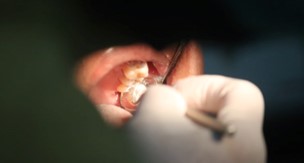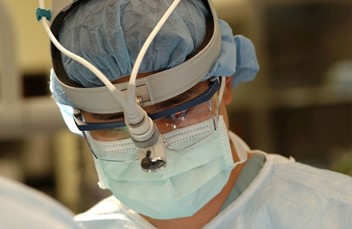Dr. Pranathi Reddy is a board-certified oral surgeon. In the following article, Dr. Pranathi Reddy discusses how maxillofacial surgeons are utilizing stem cells and engineered tissue for healing and repair.
It happens every day in America — and is done primarily the same way it has been done for the past 30 years.
Every year, millions of people have a tooth removed, often because of age-related (or grinding-related) wear, decay, an infection, or a brake in a large part of the tooth. It’s the most common type of oral surgery.
And Dr. Pranathi Reddy, oral surgeon says that these repairs can be a lengthy process. During an extraction, a tooth is removed by a dentist or oral surgeon after being numbed. The area of the jaw that once held the tooth is cleaned and often a suture is put in place to begin the healing process.
Sometimes the patient chooses to replace the “hole” with an implant, which is a separate minor surgical process that happens post-healing, a few months later.
That’s been the method for a long time — and it works well. But one day, with advancements in regenerative medicine, this may lead to an even more effective extraction process.
Dr. Pranathi Reddy on the Advancements
Definitively, regenerative medicine is any medical process that focuses on replacing damaged organs or tissues through a range of different approaches, including stem cell therapy and tissue engineering explains Dr. Pranathi Reddy.
The main goal: engineering new tissue that can repair cell damage to help restore function once more.
Traditionally, disease- or trauma-damaged tissue, along with a range of congenital disorders, is typically approached by treating symptoms with medicine or surgical techniques.
Regenerative medicine is often a more targeted and aggressive solution and is still considered a growing field within genetics, chemistry, and both human and animal medicine.
Since at least the early 1990s, the regenerative treatment field has expanded to include both oral and maxillofacial surgery.
New Research
Much of the modern research involving regenerative medicine in oral surgery has been focused on mesenchymal stem cells or MSCs.
Many studies outlining innovations in the use of MSCs within oral surgery have centered on successful tissue regeneration that makes use of areas where such stem cells are prevalent and more accessible explains Dr. Pranathi Reddy, oral surgeon.
Additional studies have identified several different factors in stem cell growth, especially when growth is contained in platelet-rich plasma or using platelet-rich fibrin.
Tissue Engineering and Stem Cells
The centerpieces of regenerative medicine in oral surgery, tissue engineering, and cellular therapies have shown great promise in clinical trials.
Dr. Pranathi Reddy explains that with tissue engineering, new tissue structures from implanted biomaterial scaffolds take the shape of the tissue and form biological material that functions just like regular tissue from the patient’s body.
Overall, Dr. Pranathi Reddy says that regenerative medicine is being explored for use in everything from organs grown in laboratories to the entire placement of cartilage, skin, blood vessels, and bladder.
Tissue engineering within maxillofacial and oral surgery can be challenging, because there are different materials and substances involved within the mouth and its structures, including covering tissues, teeth, facial bones, and a sensitive vein network.
Still, Dr. Pranathi Reddy explains that tissue engineering continues to be considered an innovative, potentially game-changing new option for maxillofacial reconstruction.
Stem cells — adults have millions of them — are typically used by the body to repair itself. Numerous studies have shown that when harvested, adult stem cells, usually collected from bone marrow, blood, muscle, and dental pulp, are injected into diseased or damaged tissue as it reconstructs itself.
Dr. Pranathi Reddy says that tissue engineering uses such harvested stem cells to form the temporary or permanent scaffolding that will hold and help create the replacement tissue.
 Applications of Regenerative Medicine
Applications of Regenerative Medicine
Regenerative medicine has been a part of oral therapies since pulp therapy became common in the early 2000s. During pulp therapy, a root canal alternative, the infected pulp tissue is removed and replaced with filling that is therapeutic, according to Dr. Pranathi Reddy, oral surgeon.
Eventually, the regenerated pulp goes a long way to restore compromised pulp and contribute to tooth healing through biodegradable scaffolding.
While the full potential of regenerative medicine in oral surgery has yet to be realized, there are many applications for tissue engineering, including bone and cartilage regeneration, soft tissue and salivary gland regeneration, and nerve, fat, and muscle regeneration.
Surgeons are also looking toward regenerative medicine to assist when there is trauma to the bone or to fix a large defect. Both bone engineered from tissue and MSCs that can convert to osteoclasts, a bone cell that absorbs tissue during healing, are viable options.
Final Thoughts
Regenerative medicine in oral surgery is a promising field that offers innovative, alternative solutions for patients suffering from oral tissue damage and diseases. These techniques have shown remarkable success rates with minimal side effects. With ongoing research and advancements in technology, regenerative medicine will undoubtedly play a critical role in transforming the way we treat oral health problems in the future.










